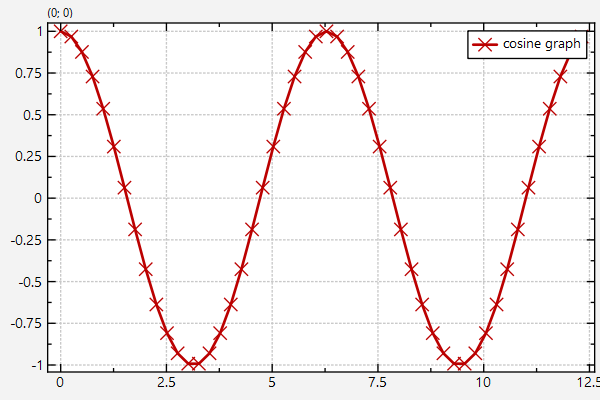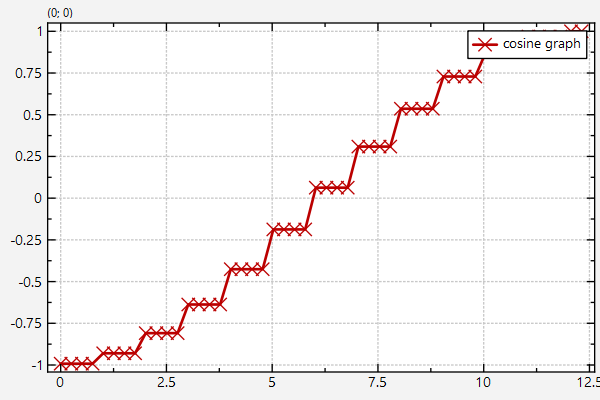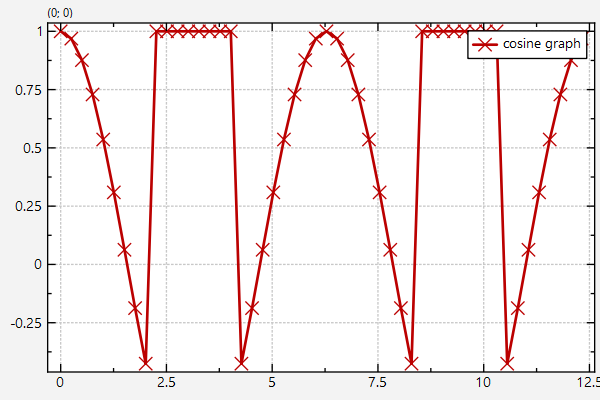 |
JKQTPlotter trunk/v5.0.0
an extensive Qt5+Qt6 Plotter framework (including a feature-richt plotter widget, a speed-optimized, but limited variant and a LaTeX equation renderer!), written fully in C/C++ and without external dependencies
|
 |
JKQTPlotter trunk/v5.0.0
an extensive Qt5+Qt6 Plotter framework (including a feature-richt plotter widget, a speed-optimized, but limited variant and a LaTeX equation renderer!), written fully in C/C++ and without external dependencies
|
This tutorial project (see ./examples/datastore_iterators/) explains how to use the iterator-based interface to JKQTPDatastore.
Note that there are additional tutorial explaining other aspects of data mangement in JKQTPDatastore:
The source code of the main application can be found in datastore_iterators.cpp. This tutorial cites parts of this code to demonstrate different ways of working with JKQTPDatastore's iterator-interface.
In every code-segment below, we will use these two declarations from the code to access the internal datastore of the JKQTPlotter instance:
In the example Basic Usage of JKQTPDatastore we discussed how to copy data from external container into and explicitly access data in columns inside a JKQTPDatastore. This tutorial explains how to use the iterator interface of JKQTPDatastore to access the data, build columns and also interact with algorithms from the C++ standard template library (or other iterator-based libraries, like e.g. boost). Also have a look at the JKQTPlotter Statistics Library and Advanced 1-Dimensional Statistics with JKQTPDatastore, as these also use the iterator-interface of JKQTPDatastore.
In other tutorials we used e.g. JKQTPDatastore::set() to set values in data columns. Using this scheme, you can write code like shown below to draw a cose curve:
Here we added two columns with 50 entries. XCol contains linearly spaced values between 0 and 2*pi and YCol contains 50 uninitialized values. Then we iterate an index i over all these items (datastore->getRows(XCol) returns the rows in a column, i.e. 50 in the example above) and used JKQTPDatastore::set() to store the calculated values in the two columns. The current x-values is read from XCol using JKQTPDatastore::get(). The resulting plot looks like this:

The same loop can be written using iterators:
Above we used two previously sized columns and accessed (read and writing) existing rows in them. But JKQTPDatastore also provides an iterator comparable to std::back_inserter, which allows to add rows at the end of an existing (here initially empty) column:
You can write this a bit more compact, if you use JKQTPDatastore::addLinearColumn() and the C++ STL-algorithm std::transform():
Of course you can now also interface other algorithms, like e.g. std::sort():
With this line of code, the YCol is sorted in ascending order and the plot becomes:

Another example would be to replace all value y<-0.5 with the value 1.0 using std::replace_if():

Finally also the erase-remove idiom (e.g. known from std::vector) is supported:
Note that the iterator classes of JKQTPDatastore (namely JKQTPColumnIterator and JKQTPColumnConstIterator) provide additional function to access the properties of the data-column row they point to:
JKQTPColumnIterator::isValid() checks whether the iterator points to a valid row in a column. it is false e.g. for an iterator returned by JKQTPDatastore::end()JKQTPColumnIterator::getPosition() returns the row/position inside the column the iterator points toJKQTPColumnIterator::getImagePosition() / JKQTPColumnIterator::getImagePositionX() / JKQTPColumnIterator::getImagePositionY() return the x-/y-location of the pointed-to pixel in an image columnJKQTPColumnIterator::getImageColumns() / JKQTPColumnIterator::getImageRows() return the width/height of the image represented by the image column (the pointed-to pixel is part of)